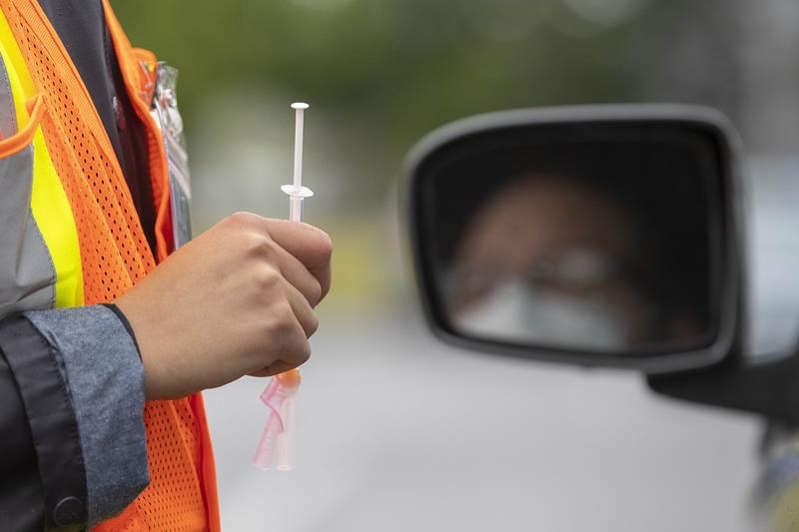COVID-19
Report Shows Politics Trumped Science on U.S. Vaccine Mandates

From the Frontier Centre for Public Policy
By Lee Harding
If you thought responsible science drove the bus on the pandemic response, think again. A December 2024 report by the U.S. House of Representatives Select Subcommittee, Coronavirus Pandemic shows that political agendas made regulatory bodies rush vaccine approvals, mandates, and boosters, causing public distrust.
“After Action Review of the COVID-19 Pandemic: The Lessons Learned and a Path Forward” praised the Trump administration’s efforts to speed up vaccine development. By contrast, the report said presidential candidate Joe Biden and vice-presidential candidate Kamala Harris undermined public confidence.
“[W]hy do we think the public is gonna line up to be willing to take the injection?” Joe Biden asked on September 5, 2020. This quote appeared in a Politico article titled “Harris says she wouldn’t trust Trump on any vaccine released before [the] election.”
The House report noted, “These irresponsible statements eventually proved to be outright hypocrisy less than a year later when the Biden-Harris Administration began to boldly decry all individuals who decided to forgo COVID-19 vaccinations for personal, religious, or medical reasons.”
Millions of doses of COVID-19 vaccines were administered beginning in December 2020 under an Emergency Use Authorization. This mechanism allows unapproved medical products to be used in emergency situations under certain criteria, including that there are no alternatives. The only previous EUA was for the 2004 anthrax vaccine, which was only administered to a narrow group of people.
By the time vaccines rolled out, SARS-CoV-2 had already infected 91 million Americans. The original SARS virus some 15 years prior showed that people who recovered had lasting immunity. Later, a January 2021 study of 200 participants by the La Jolla Institute of Immunology found 95 per cent of people who had contracted SARS-CoV-2 (the virus behind COVID-19) had lasting immune responses. A February 16, 2023 article by Caroline Stein in The Lancet (updated March 11, 2023) showed that contracting COVID-19 provided an immune response that was as good or better than two COVID-19 shots.
Correspondence suggests that part of the motivation for full (and not just emergency) vaccine approval was to facilitate vaccine mandates. A July 21, 2021, email from Dr. Marion Gruber, then director of vaccine reviews for the Food and Drug Administration (FDA), recalled that Dr. Janet Woodcock had stated that “absent a license, states cannot require mandatory vaccination.” Woodcock was the FDA’s Principal Deputy Commissioner at the time.
Sure enough, the FDA granted full vaccine approval on August 23, 2021, more than four months sooner than a normal priority process would take. Yet, five days prior, Biden made an announcement that put pressure on regulators.
On August 18, 2021, Biden announced that all Americans would have booster shots available starting the week of September 20, pending final evaluation from the FDA and the U.S. Centers for Disease Control and Prevention (CDC).
Some decision-makers objected. Dr. Marion Gruber and fellow FDA deputy director of vaccine research Dr. Philip Krause had concerns regarding the hasty timelines for approving Pfizer’s primary shots and boosters. On August 31, 2021, they announced their retirements.
According to a contemporary New York Times article, Krause and Gruber were upset about Biden’s booster announcement. The article said that “neither believed there was enough data to justify offering booster shots yet,” and that they “viewed the announcement, amplified by President Biden, as pressure on the F.D.A. to quickly authorize them.”
In The Lancet on September 13, 2021, Gruber, Krause, and 16 other scientists warned that mass boosting risked triggering myocarditis (heart inflammation) for little benefit.
“[W]idespread boosting should be undertaken only if there is clear evidence that it is appropriate,” the authors wrote. “Current evidence does not, therefore, appear to show a need for boosting in the general population, in which efficacy against severe disease remains high.”
Regardless, approval for the boosters arrived on schedule on September 24, 2021. CDC Director Dr. Rochelle Walensky granted this approval, but for a wider population than recommended by her advisory panel. This was only the second time in CDC history that a director had defied panel advice.
“[T]his process may have been tainted with political pressure,” the House report found.
Amidst all this, the vaccines were fully licensed. The FDA licensed the Comirnaty (Pfizer-BioNTech) vaccine on August 23, 2021. The very next day, Defense Secretary Lloyd Austin issued a memo announcing a vaccine mandate for the military. Four other federal mandates followed.
“[T]he public’s perception [is] that these vaccines were approved in a hurry to satisfy a political agenda,” the House report found.
The House report condemned the dubious process and basis for these mandates. It said the mandates “ignored natural immunity, … risk of adverse events from the vaccine, as well as the fact that the vaccines don’t prevent the spread of COVID-19.”
The mandates robbed people of their livelihoods, “hollowed out our healthcare and education workforces, reduced our military readiness and recruitment, caused vaccine hesitancy, reduced trust in public health, trampled individual freedoms, deepened political divisions, and interfered in the patient-physician relationship,” the report continued.
The same could be said of Canadian vaccine mandates, as shown by the National Citizen’s Inquiry hearings on COVID-19. Unfortunately, an official federal investigation and a resulting acknowledgement do not seem forthcoming. Politicized mandates led to profits for vaccine manufacturers but left “science” with a sullied reputation.
Lee Harding is a Research Fellow for the Frontier Centre for Public Policy.
COVID-19
Trump DOJ seeks to quash Pfizer whistleblower’s lawsuit over COVID shots

From LifeSiteNews
The Justice Department attorney did not mention the Trump FDA’s recent admission linking the COVID shots to at least 10 child deaths so far.
The Trump Department of Justice (DOJ) is attempting to dismiss a whistleblower case against Pfizer over its COVID-19 shots, even as the Trump Food & Drug Administration (FDA) is beginning to admit their culpability in children’ s deaths.
As previously covered by LifeSiteNews, in 2021 the BMJ published a report on insider information from a former regional director of the medical research company Ventavia, which Pfizer hired in 2020 to conduct research for the company’s mRNA-based COVID-19 shot.
The regional director, Brook Jackson, sent BMJ “dozens of internal company documents, photos, audio recordings, and emails,” which “revealed a host of poor clinical trial research practices occurring at Ventavia that could impact data integrity and patient safety […] We also discovered that, despite receiving a direct complaint about these problems over a year ago, the FDA did not inspect Ventavia’s trial sites.”
According to the report, Ventavia “falsified data, unblinded patients, employed inadequately trained vaccinators, and was slow to follow up on adverse events reported in Pfizer’s pivotal phase III trial.” Overwhelmed by numerous problems with the trial data, Jackson filed an official complaint with the FDA.
Jackson was fired the same day, and Ventavia later claimed that Jackson did not work on the Pfizer COVID-19 shot trial; but Jackson produced documents proving she had been invited to the Pfizer trial team and given access codes to software relating to the trial. Jackson filed a lawsuit against Pfizer for violating the federal False Claims Act and other regulations in January 2021, which was sealed until February 2022. That case has been ongoing ever since.
Last August, U.S. District Judge Michael Truncale dismissed most of Jackson’s claims with prejudice, meaning they could not be refiled. Jackson challenged the decision, but the Trump DOJ has argued in court to uphold it, Just the News reports, with DOJ attorney Nicole Smith arguing that the case concerns preserving the government’s unfettered power to dismiss whistleblower cases.
The rationale echoes a recurring trend in DOJ strategy that Politico described in May as “preserving executive power and preventing courts from second-guessing agency decisions,” even in cases that involve “backing policies favored by Democrats.”
Jackson’s attorney Warner Mendenhall responded that the administration “really sort of made our case for us” in effectively admitting that DOJ is taking the Fair Claims Act’s “good cause” standard for state intervention to mean “mere desire to dismiss,” which infringes on his client’s “First Amendment right to access the courts, to vindicate what she learned.”
Mendenhall added that in a refiled case, Jackson “may be able to bring a very different case along the same lines, but with the additional information” to prove fraud, whereas rejection would send the message that “if fraud involves government complicity, don’t bother reporting it.”
That additional information would presumably include the FDA’s recent admission that at least 10 children the agency has reviewed so far “died after and because of receiving COVID-19 vaccination.”
“The truth is we do not know if we saved lives on balance,” admitted FDA Chief Medical Officer Vinay Prasad in a recent leaked email. “It is horrifying to consider that the U.S. vaccine regulation, including our actions, may have harmed more children than we saved. This requires humility and introspection.”
The COVID shots have been highly controversial ever since the first Trump administration’s Operation Warp Speed initiative prepared and released them in a fraction of the time any previous vaccine had ever been developed and tested. As LifeSiteNews has extensively covered, a large body of evidence has steadily accumulated over the past five years indicating that the COVID jabs failed to prevent transmission and, more importantly, carried severe risks of their own.
Ever since, many have intently watched and hotly debated what President Donald Trump would do about the situation upon his return to office. Though he never backed mandates like former President Joe Biden did, for years Trump refused to disavow the shots to the chagrin of his base, seeing Operation Warp Speed as one of his crowning achievements. At the same time, during his latest run he embraced the “Make America Healthy Again” movement and its suspicion of the medical establishment more broadly.
So far, Trump’s second administration has rolled back several recommendations for the shots but not yet pulled them from the market, despite hiring several vocal critics of the COVID establishment and putting the Department of Health & Human Services under the leadership of America’s most prominent anti-vaccine advocate, Robert F. Kennedy Jr. Most recently, the administration has settled on leaving the current jabs optional but not supporting work to develop successors.
In a July interview, FDA Commissioner Marty Makary asked for patience from those unsatisfied by the administration’s handling of the shots, insisting more time was needed for comprehensive trials to get more definitive data.
COVID-19
Canadian Health Department funds study to determine effects of COVID lockdowns on children

From LifeSiteNews
The commissioned study will assess the impact on kids’ mental well-being of COVID lockdowns and ‘remote’ school classes that banned outdoor play and in-person learning.
Canada’s Department of Health has commissioned research to study the impact of outdoor play on kids’ mental well-being in light of COVID lockdowns and “remote” school classes that, for a time, banned outdoor play and in-person learning throughout most of the nation.
In a notice to consultants titled “Systematic Literature Reviews And Meta Analyses Supporting Two Projects On Children’s Health And Covid-19,” the Department of Health admitted that “Exposure to green space has been consistently associated with protective effects on children’s physical and mental health.”
A final report, which is due in 2026, will provide “Health Canada with a comprehensive assessment of current evidence, identify key knowledge gaps and inform surveillance and policy planning for future pandemics and other public health emergencies.”
Bruce Squires, president of McMaster Children’s Hospital of Hamilton, Ontario, noted in 2022 that “Canada’s children and youth have borne the brunt” of COVID lockdowns.
From about March 2020 to mid-2022, most of Canada was under various COVID-19 mandates and lockdowns, including mask mandates, at the local, provincial, and federal levels. Schools were shut down, parks were closed, and most kids’ sports were cancelled.
Mandatory facemask polices were common in Canada and all over the world for years during the COVID crisis despite over 170 studies showing they were not effective in stopping the spread of COVID and were, in fact, harmful, especially to children.
In October 2021, then-Prime Minister Justin Trudeau announced unprecedented COVID-19 jab mandates for all federal workers and those in the transportation sector, saying the un-jabbed would no longer be able to travel by air, boat, or train, both domestically and internationally.
As reported by LifeSiteNews, a new report released by the Justice Centre for Constitutional Freedoms (JCCF) raised alarm bells over the “harms caused” by COVID-19 lockdowns and injections imposed by various levels of government as well as a rise in unexplained deaths and bloated COVID-19 death statistics.
Indeed, a recent study showed that COVID masking policies left children less able to differentiate people’s emotions behind facial expressions.
COVID vaccine mandates and lockdowns, which came from provincial governments with the support of the federal government, split Canadian society.
-

 C2C Journal2 days ago
C2C Journal2 days agoWisdom of Our Elders: The Contempt for Memory in Canadian Indigenous Policy
-

 Automotive2 days ago
Automotive2 days agoThe $50 Billion Question: EVs Never Delivered What Ottawa Promised
-

 Alberta2 days ago
Alberta2 days agoAlberta introducing three “all-season resort areas” to provide more summer activities in Alberta’s mountain parks
-

 Agriculture2 days ago
Agriculture2 days agoGrowing Alberta’s fresh food future
-

 Censorship Industrial Complex2 days ago
Censorship Industrial Complex2 days agoConservative MP calls on religious leaders to oppose Liberal plan to criminalize quoting Scripture
-

 Daily Caller1 day ago
Daily Caller1 day agoUS Supreme Court Has Chance To End Climate Lawfare
-

 Business16 hours ago
Business16 hours agoAlbertans give most on average but Canadian generosity hits lowest point in 20 years
-

 Business16 hours ago
Business16 hours agoTaxpayers Federation calls on politicians to reject funding for new Ottawa Senators arena









